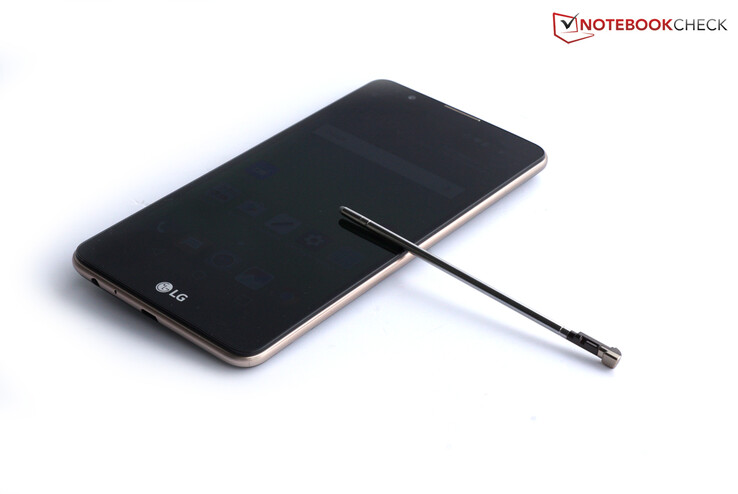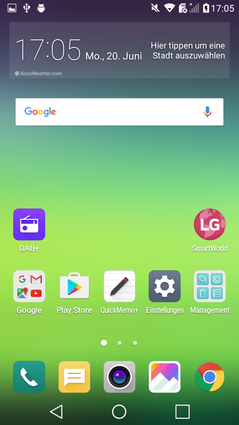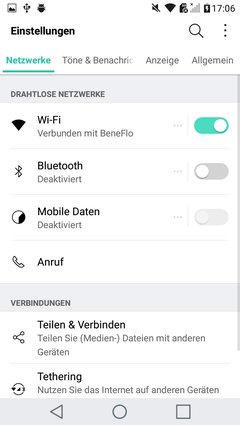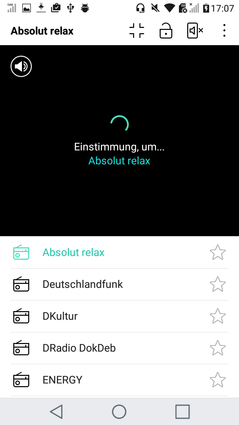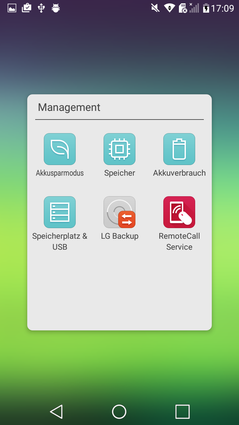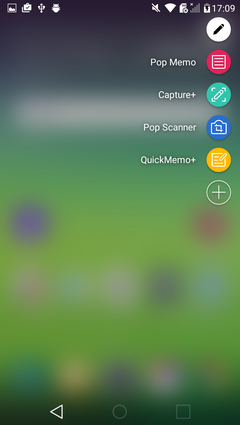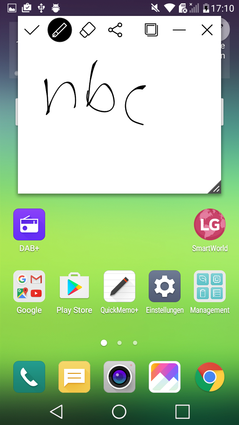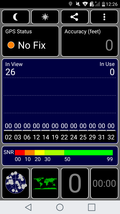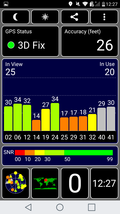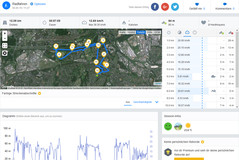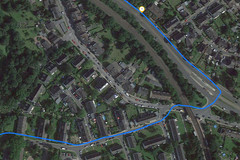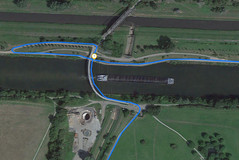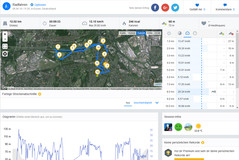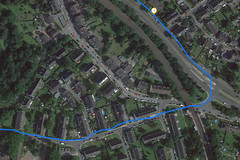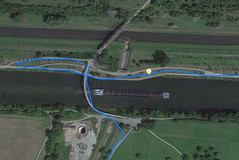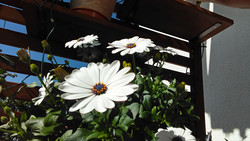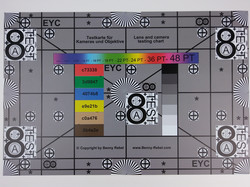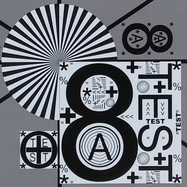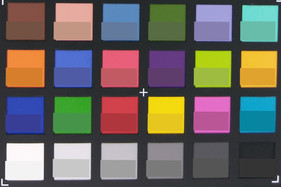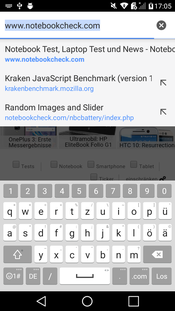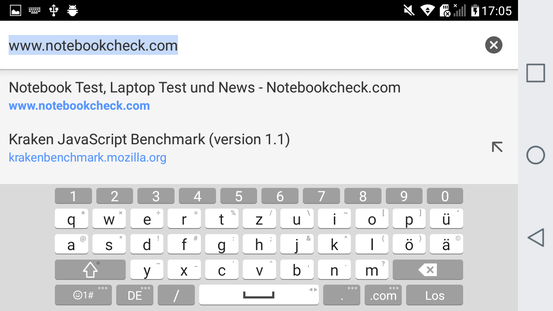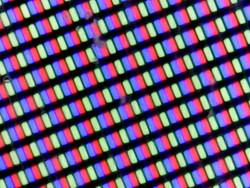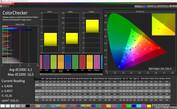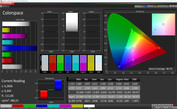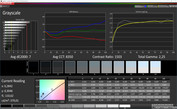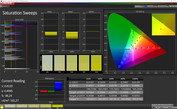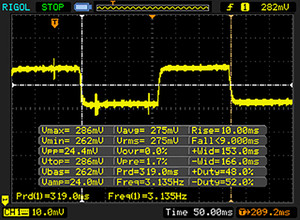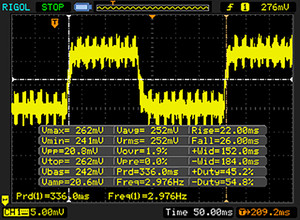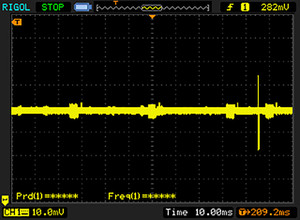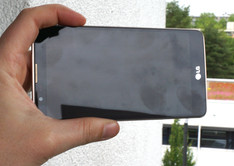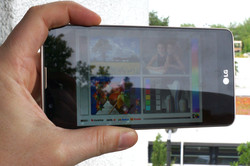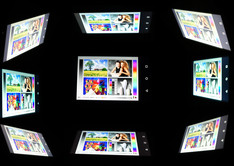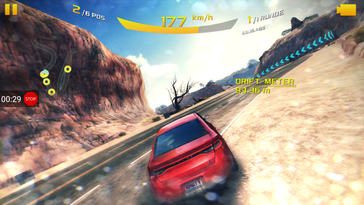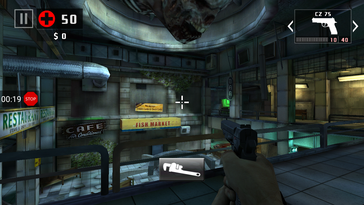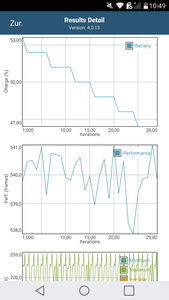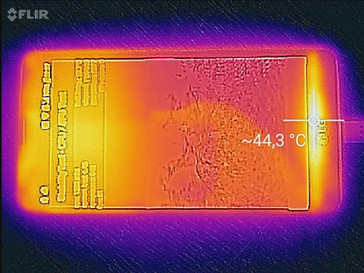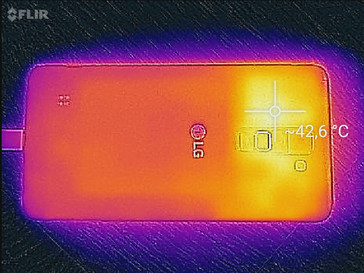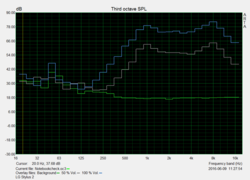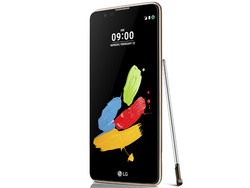LG Stylus 2 Smartphone Review
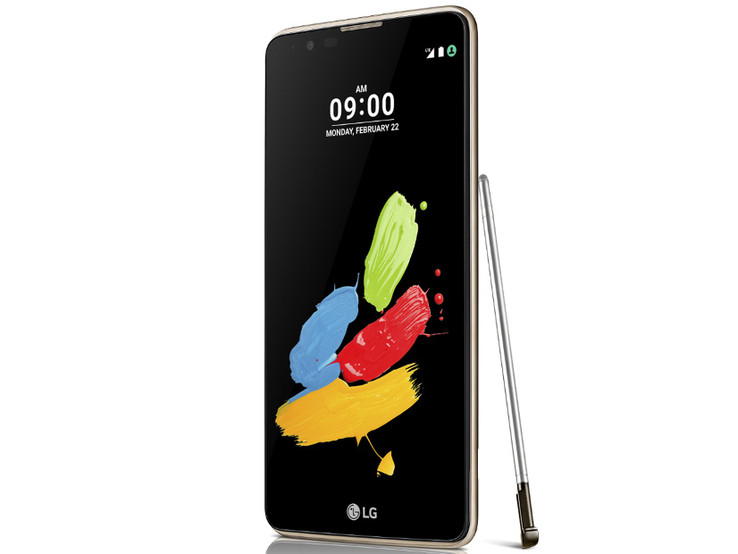
For the original German review, see here.
The Korean manufacturer introduces an affordable mid-range smartphone that supports the name-giving stylus which is integrated into the casing ex-factory and is dubbed LG Stylus 2. However, that is not the only top highlight that LG gives to its phone: The Stylus 2 is the first smartphone in the world (according to LG) that supports receiving the DAB+ digital radio standard that is replacing FM reception next year.
A removable battery, big HD screen and 13-megapixel camera are also installed. The SoC is sooner a slow model. How does LG's Stylus 2 perform in the test, and is stylus inputting or DAB+ reception the smartphone's killer feature?
Presently many smartphones that want to be special are found in the low-cost mid-range: Asus' ZenFone Max offers an especially big battery, OnePlus' 2 and Huawei's P9 Lite try to add premium range feeling for little money, and Huawei's G8 tries to lure customers with its stylish design.
Case
Primarily Chinese manufacturers as well as Samsung's low-cost and good Galaxy A lineup have made metal casings in the mid-range very popular. LG does not connect to this trend with the Stylus 2 but relies on plastic all over instead. That also saves weight: With 142 grams, LG's Stylus 2 is the lightest among the comparison devices although it is the biggest smartphone at the same time.
The stability could be better: Pressure on both the front and back becomes visible on the screen. At least it is difficult to warp the handset, which then produces a quiet cracking noise. The smartphone is pleasant to hold thanks to rounded edges, but its size does not make it as suitable for small hands.
The handset is presently available only in the color combination black/brown. The front is black, and the sides and back are brown. The smartphone's removable back cover features a concentric circle pattern that feels high-quality and slip-proof. The user can access the nano-SIM slot, micro-SIM slot and removable battery under it. A bit inconvenient: The SIM card can only be replaced after removing the battery.
Connectivity
LG's Stylus 2 only has 1.5 GB of working memory. 16 GB of storage capacity is normal for this category. The micro-SD reads cards of up to 128 GB. NFC is on board, but USB OTG is not supported.
Radio reception is certainly a special feature of the configuration as it is possible via DAB+ and FM. DAB+ allegedly involves a multitude of advantages: For example, some local radio stations can be received everywhere in Germany, and considerably more stations are possible. Only about 20% of the signal strength is needed for clear reception, and the standard allows transmitting information about songs and news or even photos and videos with the signal. LG relies on this feature especially in Germany, where a lot of radio is heard, for marketing its Stylus 2.
A symbol that displays the reception's signal strength appears in the upper left when the preloaded DAB+ app is opened. Headphones have to be connected for reception because they act as antennas. Audio output via speakers is also possible. The signal strength in our city office was quite weak, and it was only possible to hear radio via DAB+ near a window. In return, it was no problem receiving FM radio stations. The situation improved outdoors where we always had good reception in the city. Reception was no problem in other places, and even photos were transmitted.
The app is nicely designed and offers favorites, a widget mode and other things. However, the translation is not always correct, and album covers or the like were not transmitted in our test. DAB+ unfortunately still makes a somewhat undeveloped impression simply because DAB+ reception is not yet widespread. Thus, it is not really LG's fault. Nevertheless, it is not a killer feature in its present state.
Software
LG uses Android 6.0.1 with the security patch from 04/01/2016. The manufacturer strongly modifies the Android graphics. However, navigating through the operating system is the same so that users will quickly get used to it.
The preloaded apps are primarily related to both the most important features: The stylus and DAB+ reception. We find the app "Pop Scanner" interesting; parts of a photo can be cut and edited, making a clean "scan" of a document possible. It is ultimately not much more than a program for quickly cutting photos and the app does this job quite well.
The Stylus offers diverse features for making notes otherwise, either as a widget via the home screen or in full-screen mode. A small menu of apps where the stylus is especially useful opens when it is taken out of its slot. This is similar to the solution in Samsung's Galaxy Note lineup. Also interesting: The stylus can be used on a disabled screen, which naturally enables it. An app for making notes opens directly when the stylus is removed in standby mode. The black background makes it look as if the user is writing on a disabled screen.
Communication & GPS
LG's Stylus 2 offers its user four GSM, four UMTS and five LTE frequencies. That should be enough in Europe, and the smartphone supports three of the four most frequently used LTE bands in the world. However, it will not be easy finding a network with the European LG Stylus 2 model in Asia.
The smartphone transmits data at a maximum of 150 Mbps (download) and 50 Mbps (upload). Among the comparison devices, only OnePlus' 2 supports higher speeds. The reception in an urban area is quite good in the well-developed German Vodafone network. We almost always had the full signal even indoors.
The Wi-Fi network standards 802.11 b/g/n are supported. Thus, it is not possible to use the 5 GHz range. The reception quality is good: Websites open quickly and the full signal is available near the router. Three-quarters of the signal is still received ten meters away and through three walls. Websites open just as quickly.
We could not be tracked via the GPS module indoors. It took quite a while until enough satellites were found for localization outdoors. The signal was then unstable and disrupted occasionally then. The maximum accuracy was seven meters. In total, a mediocre performance from the GPS module.
To test how LG's Stylus 2 fares in practice, we took it on a mountain bike ride along with Garmin's Edge 500 professional navigation system. The measured route deviated by 70 meters, which is not much in relation to the 12-kilometer route. Garmin's Edge 500 is clearly superior to our review sample in terms of accuracy. LG's Stylus 2 repeatedly draws straight lines when the signal between two points is lost. Thus, we often seemed to ride through a meadow although we always stayed on the road.
Telephone & Call Quality
LG has modified the phone app slightly. However, it provides the same features as Google's stock app. The keypad fades in directly when opened and matching contacts are displayed during inputs. Tabs for call lists, contacts and groups are also displayed. The app can also be placed over the smartphone's home screen (overlay).
Call quality is acceptable: Our contact understood us well; the microphone is very sensitive. This involves the advantage that we are heard well even when talking quietly. However, the sound also overdrives quickly. Sound from the earpiece is quite thin. We could barely hear the low tones of our contact's voice. The sound also hums very audibly at volumes of over 70%. It is overall better when using hands-free mode, but our contact sounds a bit tinny here, as well.
Cameras
The cameras on the rear and on the front have the common resolutions for this category on paper. The primary camera has a resolution of 13 megapixels alongside a simple LED flash and records videos in 1080p. The selfie camera offers 8 megapixels, which is a higher resolution than some comparison devices can offer. However, it has often been proved that conclusions about photo quality cannot be made automatically based on the sensor's resolution.
The color reproduction of the front camera's photos looks quite natural and they are brightened well even in dark areas (visible beams below the bridge in scene 1). However, the sky outshines the edges of darker objects before it. The image sharpness is good but slightly decreases toward the photo's edge. The photos blur quite fast in low-light conditions. Some comparison devices deliver a considerably better performance here.
The photos of the primary camera are also well-illuminated and relatively sharp. However, fast movements look hazy due to just 30 frames per second.
The rear camera also offers a good color reproduction and the sharpness is satisfactory.
For making more precise statements about the primary camera's sharpness and color reproduction, we photograph our reference card in defined light conditions. The photo also looks fairly sharp in the total view. The colors are perhaps a bit too dark. Blurred outlines, particularly in transitions from black to colors, are seen in the detail magnification. It is also seen here that the sharpness visibly decreases toward the edges. The color reproduction is somewhat too bright, with exception of black that is darker than the reference, in the comparison with the reference color space. Subjectively, the colors look very vivid here.
Accessories & Warranty
LG's Stylus 2 comes with a charger, USB charging cable and an in-ear headset. The stylus is already inserted into its slot in the casing when delivered.
LG speaks of a Quick View Cover on the product page. Information like time and notifications are displayed on a visible part on a long side of the screen. Accepting calls is also possible. However, this cover is not found as a standalone product on LG's website, and it is also difficult to find on the Internet. A British retailer presently lists it at almost £28, equivalent to around 36.50 Euros (~$40).
A warranty period of 24 months is included.
Input Devices & Handling
LG modifies the virtual keyboard, and it can be configured with quite extensive settings. For example, the keyboard's height can be adapted at will, swipe gestures can be turned on and off or input via handwriting can be enabled. Many functions can be reached directly via quick accesses on the keyboard. It is also possible to type accurately using the keyboard on the large screen of LG's Stylus 2. Google's keyboard can be enabled in the settings or a completely different keyboard can be downloaded from Google's Play Store when preferred.
The touchscreen is accurate into the corners, and its handling is precise. Since the physical controls are on the rear of many LG devices, the smartphone can be reactivated via double tapping the screen, which is handy in many situations. On the other hand, the smartphone sometimes wakes up when in a pocket.
The stylus is certainly the highlight of all input options. It is a true rarity in this price range. Although it does not support pressure levels making it rather unsuitable for artists, the preloaded apps detect how fast the user is writing and accordingly displays thinner lines (fast) or thicker lines (slow). This leads to a quite appealing calligraphy effect. The stylus can generally be used for managing the operating system, which also functioned well.
Display
With a screen size of 5.7-inches, LG's Stylus 2 is a genuine phablet, i.e. a smartphone that borders on the size of a tablet. Its resolution of 1280x720 pixels is then quite low for this and leads to a PPI density (pixel per inch density) of 258.
Almost all comparison devices offer higher resolutions on somewhat smaller screens. Thus, their PPI is much higher. When looking more closely, it becomes evident that the reproduction on LG's Stylus 2 is not as crisp as, for example, on OnePlus' 2. This is particularly visible when looking at the icons' small lettering.
The screen brightness is also quite low: We measured a maximum of 388 cd/m², and even just 383 cd/m² in the practical APL50 test. The comparison devices offer considerably brighter screens. The brightness does not surpass these rates even when the light sensor is illuminated.
At least the illumination of 92% is relatively homogeneous so that large colored areas make an evenly bright impression.
| |||||||||||||||||||||||||
Brightness Distribution: 92 %
Center on Battery: 370 cd/m²
Contrast: 1480:1 (Black: 0.25 cd/m²)
ΔE ColorChecker Calman: 6.1 | ∀{0.5-29.43 Ø4.78}
ΔE Greyscale Calman: 7 | ∀{0.09-98 Ø5}
Gamma: 2.25
CCT: 8350 K
| LG Stylus 2 IPS, 1280x720, 5.7" | Huawei G8 IPS, 1920x1080, 5.5" | OnePlus 2 IPS, 1920x1080, 5.5" | Huawei P9 Lite IPS, 1920x1080, 5.2" | Asus ZenFone Max ZC550KL IPS, 1280x720, 5.5" | |
|---|---|---|---|---|---|
| Screen | -6% | 14% | -8% | 4% | |
| Brightness middle (cd/m²) | 370 | 468 26% | 451 22% | 505 36% | 586 58% |
| Brightness (cd/m²) | 374 | 455 22% | 446 19% | 468 25% | 566 51% |
| Brightness Distribution (%) | 92 | 93 1% | 90 -2% | 88 -4% | 84 -9% |
| Black Level * (cd/m²) | 0.25 | 0.44 -76% | 0.3 -20% | 0.74 -196% | 0.57 -128% |
| Contrast (:1) | 1480 | 1064 -28% | 1503 2% | 682 -54% | 1028 -31% |
| Colorchecker dE 2000 * | 6.1 | 6.41 -5% | 3.84 37% | 4.1 33% | 4.2 31% |
| Colorchecker dE 2000 max. * | 16.5 | 12.02 27% | 5.8 65% | 8.4 49% | |
| Greyscale dE 2000 * | 7 | 7.79 -11% | 3.97 43% | 4.9 30% | 6.3 10% |
| Gamma | 2.25 98% | 2.29 96% | 2.46 89% | 2.5 88% | 2.39 92% |
| CCT | 8350 78% | 8651 75% | 7283 89% | 7116 91% | 6614 98% |
| Color Space (Percent of AdobeRGB 1998) (%) | 58.07 | ||||
| Color Space (Percent of sRGB) (%) | 90.14 |
* ... smaller is better
We quite like the low black level of 0.25 cd/m², which results in an equally impressive contrast ratio of 1480:1. However, colors look a bit faded on the screen. The fraction of blue in the image can be reduced via "Reader" mode, which spares the eyes and makes it easier to fall asleep at night, for example.
The CalMAN software in conjunction with a spectrophotometer allows more precise statements about color reproduction. A visible bluish tint that particularly distorts bright grayscale levels is evident here without the above mentioned Reader mode. The aberrations from the reference color space are quite big, and thus the user should not rely on the screen's colors for prepress repros. Especially blue colors deviate strongly from the original.
Display Response Times
| ↔ Response Time Black to White | ||
|---|---|---|
| 19 ms ... rise ↗ and fall ↘ combined | ↗ 10 ms rise | |
| ↘ 9 ms fall | ||
| The screen shows good response rates in our tests, but may be too slow for competitive gamers. In comparison, all tested devices range from 0.1 (minimum) to 240 (maximum) ms. » 41 % of all devices are better. This means that the measured response time is similar to the average of all tested devices (20.2 ms). | ||
| ↔ Response Time 50% Grey to 80% Grey | ||
| 48 ms ... rise ↗ and fall ↘ combined | ↗ 22 ms rise | |
| ↘ 26 ms fall | ||
| The screen shows slow response rates in our tests and will be unsatisfactory for gamers. In comparison, all tested devices range from 0.165 (minimum) to 636 (maximum) ms. » 82 % of all devices are better. This means that the measured response time is worse than the average of all tested devices (31.6 ms). | ||
Screen Flickering / PWM (Pulse-Width Modulation)
| Screen flickering / PWM not detected | |||
In comparison: 53 % of all tested devices do not use PWM to dim the display. If PWM was detected, an average of 8098 (minimum: 5 - maximum: 343500) Hz was measured. | |||
Reflections and the low brightness make it difficult to easily recognize screen content on cloudy days outdoors. Nothing can be recognized when bright sunlight shines on the screen. The user will have to find a shaded place.
Slight brightness aberrations are visible when the smartphone is tilted in different directions. However, the image remains stable even in very flat angles thanks to IPS technology.
Performance
Qualcomm's Snapdragon 410 MSM8916 in our review sample has four cores and clocks at 1.4 GHz. It is a comparatively weak model; much stronger processors are found among the comparison devices. Consequently, our review sample is in one of the last places compared with equally priced devices in the processor and system benchmarks. Asus' ZenFone Max is on par since it is based on the same SoC.
An Adreno 306 is the installed graphics solution. It clocks at 450 MHz and, compared with equally priced devices, it supplies LG's Stylus 2 with less performance in the benchmarks.
Despite that, it is possible to perform routine work decently with LG's Stylus 2. Performance is normally no issue even in LG's Dual Window mode where two apps run adjacently. Animations occasionally stuttered a bit, but that was tolerable.
| AnTuTu v6 - Total Score (sort by value) | |
| LG Stylus 2 | |
| OnePlus 2 | |
| Huawei P9 Lite | |
| Huawei G8 | |
| Asus ZenFone Max ZC550KL | |
| Geekbench 3 | |
| 64 Bit Single-Core Score (sort by value) | |
| LG Stylus 2 | |
| OnePlus 2 | |
| Huawei P9 Lite | |
| Huawei G8 | |
| Asus ZenFone Max ZC550KL | |
| 64 Bit Multi-Core Score (sort by value) | |
| LG Stylus 2 | |
| OnePlus 2 | |
| Huawei P9 Lite | |
| Huawei G8 | |
| Asus ZenFone Max ZC550KL | |
| 3DMark | |
| 1280x720 offscreen Ice Storm Unlimited Score (sort by value) | |
| LG Stylus 2 | |
| OnePlus 2 | |
| Huawei P9 Lite | |
| Huawei G8 | |
| Asus ZenFone Max ZC550KL | |
| 1280x720 offscreen Ice Storm Unlimited Graphics Score (sort by value) | |
| LG Stylus 2 | |
| OnePlus 2 | |
| Huawei P9 Lite | |
| Huawei G8 | |
| Asus ZenFone Max ZC550KL | |
| 1280x720 offscreen Ice Storm Unlimited Physics (sort by value) | |
| LG Stylus 2 | |
| OnePlus 2 | |
| Huawei P9 Lite | |
| Huawei G8 | |
| Asus ZenFone Max ZC550KL | |
| 2560x1440 Sling Shot OpenGL ES 3.0 (sort by value) | |
| LG Stylus 2 | |
| OnePlus 2 | |
| Huawei P9 Lite | |
| Huawei G8 | |
| Asus ZenFone Max ZC550KL | |
| 2560x1440 Sling Shot OpenGL ES 3.0 Graphics (sort by value) | |
| LG Stylus 2 | |
| OnePlus 2 | |
| Huawei P9 Lite | |
| Huawei G8 | |
| Asus ZenFone Max ZC550KL | |
| 2560x1440 Sling Shot OpenGL ES 3.0 Physics (sort by value) | |
| LG Stylus 2 | |
| OnePlus 2 | |
| Huawei P9 Lite | |
| Huawei G8 | |
| Asus ZenFone Max ZC550KL | |
| GFXBench (DX / GLBenchmark) 2.7 | |
| T-Rex Onscreen (sort by value) | |
| LG Stylus 2 | |
| OnePlus 2 | |
| Huawei P9 Lite | |
| Huawei G8 | |
| 1920x1080 T-Rex Offscreen (sort by value) | |
| LG Stylus 2 | |
| OnePlus 2 | |
| Huawei P9 Lite | |
| Huawei G8 | |
| Asus ZenFone Max ZC550KL | |
| GFXBench 3.0 | |
| on screen Manhattan Onscreen OGL (sort by value) | |
| LG Stylus 2 | |
| OnePlus 2 | |
| Huawei P9 Lite | |
| Huawei G8 | |
| Asus ZenFone Max ZC550KL | |
| 1920x1080 1080p Manhattan Offscreen (sort by value) | |
| LG Stylus 2 | |
| OnePlus 2 | |
| Huawei P9 Lite | |
| Huawei G8 | |
| Asus ZenFone Max ZC550KL | |
| GFXBench 3.1 | |
| on screen Manhattan ES 3.1 Onscreen (sort by value) | |
| LG Stylus 2 | |
| OnePlus 2 | |
| Huawei P9 Lite | |
| 1920x1080 Manhattan ES 3.1 Offscreen (sort by value) | |
| LG Stylus 2 | |
| OnePlus 2 | |
| Huawei P9 Lite | |
| PCMark for Android - Work performance score (sort by value) | |
| LG Stylus 2 | |
| OnePlus 2 | |
| Huawei P9 Lite | |
| Huawei G8 | |
| Asus ZenFone Max ZC550KL | |
Faster devices are also found among equally priced smartphones in terms of Internet browsing. Again, Asus' ZenFone Max is on par with our review sample. In total, we are satisfied with the everyday speed even on the Internet.
| Octane V2 - Total Score (sort by value) | |
| LG Stylus 2 | |
| OnePlus 2 | |
| Huawei P9 Lite | |
| Huawei G8 | |
| Asus ZenFone Max ZC550KL | |
| Mozilla Kraken 1.1 - Total (sort by value) | |
| LG Stylus 2 | |
| OnePlus 2 | |
| Huawei P9 Lite | |
| Huawei G8 | |
| Asus ZenFone Max ZC550KL | |
| WebXPRT 2015 - Overall (sort by value) | |
| LG Stylus 2 | |
| OnePlus 2 | |
| Huawei P9 Lite | |
| JetStream 1.1 - Total Score (sort by value) | |
| LG Stylus 2 | |
| OnePlus 2 | |
| Huawei P9 Lite | |
| Huawei G8 | |
| Asus ZenFone Max ZC550KL | |
* ... smaller is better
Some devices access the storage faster and others slower. However, the fast access on our micro-SD card by Toshiba especially pleased us. The Stylus 2 is the fastest in both read and write.
Apps unfortunately cannot be moved to the SD card. The new Android feature that allows formatting the external memory card as internal storage and then to be used as such is unfortunately not possible in LG's Stylus 2.
| AndroBench 3-5 | |
| Sequential Read 256KB (sort by value) | |
| LG Stylus 2 | |
| OnePlus 2 | |
| Huawei P9 Lite | |
| Asus ZenFone Max ZC550KL | |
| Huawei G8 | |
| Sequential Write 256KB (sort by value) | |
| LG Stylus 2 | |
| OnePlus 2 | |
| Huawei P9 Lite | |
| Asus ZenFone Max ZC550KL | |
| Huawei G8 | |
| Random Read 4KB (sort by value) | |
| LG Stylus 2 | |
| OnePlus 2 | |
| Huawei P9 Lite | |
| Asus ZenFone Max ZC550KL | |
| Huawei G8 | |
| Random Write 4KB (sort by value) | |
| LG Stylus 2 | |
| OnePlus 2 | |
| Huawei P9 Lite | |
| Asus ZenFone Max ZC550KL | |
| Huawei G8 | |
| Sequential Read 256KB SDCard (sort by value) | |
| LG Stylus 2 | |
| Huawei P9 Lite | |
| Asus ZenFone Max ZC550KL | |
| Huawei G8 | |
| Sequential Write 256KB SDCard (sort by value) | |
| LG Stylus 2 | |
| Huawei P9 Lite | |
| Asus ZenFone Max ZC550KL | |
| Huawei G8 | |
Games
LG's Stylus 2 holds its ground in games. The screen's low resolution certainly contributes to this. Although it only achieved a frame rate of 15 FPS in high settings in the fast-paced racing game Asphalt 8, the game remained playable. The shooter Dead Trigger 2 achieved its usual 30 FPS on the handset.
Control via touchscreen and position sensor functioned smoothly.
| Asphalt 8: Airborne | |||
| Settings | Value | ||
| high | 15 fps | ||
| Dead Trigger 2 | |||
| Settings | Value | ||
| high | 30 fps | ||
Emissions
Temperature
The casing temperatures of LG's Stylus 2 make for a rather pleasing chapter: The maximum temperature is 39.2 °C. That is a relatively low rate especially since this temperature is clearly limited to the back and decreases toward the lower edge. The front reaches a maximum of 36 °C, which is felt lightly, but not at all unpleasantly.
Thus, neither the GPU nor CPU has problems in maintaining their performance even after prolonged use. The same sequence is repeated 30 times in the battery test of GFXBench, and the frame rate is logged. LG's Stylus 2 only exhibits minor fluctuations here.
(+) The maximum temperature on the upper side is 38 °C / 100 F, compared to the average of 35.2 °C / 95 F, ranging from 21.9 to 247 °C for the class Smartphone.
(+) The bottom heats up to a maximum of 39.2 °C / 103 F, compared to the average of 34 °C / 93 F
(±) In idle usage, the average temperature for the upper side is 33.4 °C / 92 F, compared to the device average of 32.9 °C / 91 F.
Speaker
The little rear-sided speaker manages a maximum of 88.12 dB(A). That is quite loud and is enough to fill small rooms with sound. The sound is relatively tinny in total, but it also displays a bit of warmth thanks to acceptably prominent mids. Low tones are actually non-existent, but the trebles are not overemphasized, either. Overall, the speaker is a bit more pleasing than some other smartphone speakers, but it cannot match premium-range models or even the speaker in OnePlus' 2. Sound output via audio jack and Bluetooth is clear.
Energy Management
Power Consumption
Despite the large screen, LG's Stylus 2 is very frugal with energy in all scenarios. Asus' ZenFone Max is based on the same SOC and proves just how important it is for manufacturers to make optimizations: Asus' smartphone consumes considerably more power than our review sample.
Not only are the low consumption rates of LG's Stylus 2 in a shutdown and standby state pleasing but also the very low load consumption that is almost half of what other devices consume.
| Off / Standby | |
| Idle | |
| Load |
|
Key:
min: | |
| LG Stylus 2 | OnePlus 2 | Huawei P9 Lite | Asus ZenFone Max ZC550KL | Huawei G8 | |
|---|---|---|---|---|---|
| Power Consumption | -35% | -31% | -60% | -56% | |
| Idle Minimum * (Watt) | 0.64 | 0.6 6% | 0.73 -14% | 1.15 -80% | 0.81 -27% |
| Idle Average * (Watt) | 1.71 | 1.7 1% | 2.09 -22% | 2.09 -22% | 2.02 -18% |
| Idle Maximum * (Watt) | 1.75 | 1.8 -3% | 2.11 -21% | 2.17 -24% | 2.16 -23% |
| Load Average * (Watt) | 3.03 | 5.7 -88% | 4.15 -37% | 5.38 -78% | 5.4 -78% |
| Load Maximum * (Watt) | 3.11 | 6 -93% | 5.05 -62% | 6.08 -95% | 7.24 -133% |
* ... smaller is better
Battery Runtime
The low consumption rates already indicate that LG's Stylus 2 will keep up quite well in battery life. In fact, our review sample manages 11:03 hours in our practical Wi-Fi test on its battery with a capacity of 11.6 watt hours. That is a clear edge on review samples with an equally sized battery. The ZenFone Max achieves a few hours more thanks to its tremendously strong battery.
Our practical experience shows that two workdays of moderate use and without recharging are quite possible with LG's Stylus 2.
| LG Stylus 2 3000 mAh | OnePlus 2 mAh | Asus ZenFone Max ZC550KL 5000 mAh | Huawei P9 Lite 3000 mAh | Huawei G8 3000 mAh | |
|---|---|---|---|---|---|
| Battery runtime | -15% | 44% | -2% | -25% | |
| Reader / Idle (h) | 20.4 | 23.2 14% | 23.4 15% | ||
| H.264 (h) | 11.6 | 9.7 -16% | 9.5 -18% | ||
| WiFi v1.3 (h) | 11.1 | 5.9 -47% | 16 44% | 10.1 -9% | 8.3 -25% |
| Load (h) | 4.3 | 3.8 -12% | 4.5 5% |
Pros
Cons
Verdict
LG's Stylus 2 stands out from other mid-range devices with some innovative features. First to mention is the stylus that is actually only known from considerably higher priced devices. It allows making handwritten notes on the screen or cut objects out of photos accurately. Pressure levels are not supported, and (hobby) artists will not be happy with it.
The second feature is radio reception via DAB+. LG has come up with a real innovation and a great feature for Central Europe. Mobile Internet costs are now so low and access so far-reaching that most people do not use radio but stream in other regions of the world.
However, the reception was too weak indoors in a city in our test. Furthermore, it was only really reliable in conjunction with the included headset. The offer of radio stations is vast, but the network still has to be developed further and the advantages used more clearly before digital radio reception will be a real alternative.
LG's Stylus 2 is an innovative handset that displays cost pressure in some places. The stylus and DAB+ unfortunately also look cooler on paper than in real life.
Thus, neither of the features is uncompromisingly convincing, and some drawbacks will have to be accepted: The screen only has a resolution of 720p and is not really bright. Buyers looking for a handset with more power will find considerably better alternatives in this price range. The call quality is also sooner middling.
There are some positive aspects: We like the cameras' photos at least when shot in bright surroundings. The battery also lasts a long time thanks to low power consumption. The reception of the communication modules is decent, and LG also relies on a fairly up-to-date version of Android.
We barely had a situation where the name-giving stylus really made sense. However, anyone who has ever wanted a smartphone with a big screen and stylus for little money and is intending to try DAB+ reception should give LG's Stylus 2 a chance.
LG Stylus 2
- 06/22/2016 v5.1 (old)
Florian Wimmer




